Discover What Onpage SEO is and 23+ Effective Onpage Optimization Checklist
- Published on
![What is Onpage SEO? 23+ Basic & Advanced Onpage Optimization Checklist [2025]](/blog-posts/seo-onpage/seo-onpage-banner.jpg)
- What is Onpage SEO?
- Difference Between Onpage SEO and Offpage SEO
- What Are the Most Important Onpage SEO Elements?
- 15+ Onpage SEO Standards Recommended by Google
- SEO-Friendly URL
- Title Tag
- Heading 1 (H1)
- Headings 2 and 3 (H2, H3)
- Keyword Density
- Unique, In-Depth Content That Meets Search Intent
- Optimize Meta Description
- Image Optimization
- Optimize Semantic Keywords (LSI Keywords)
- Bold Main Keywords in the Article
- Table of Content (TOC)
- Featured Snippets
- Internal Links and Outbound Links
- Blockquote (Quotes)
- Optimize Secondary Title Tags (H2, H3, H4)
- 8+ Advanced Onpage SEO Standards
- Featured Snippets
- Internal and Outbound Links
- Blockquote (Quotes)
- Content GAP (Missing Content)
- Schema Markup
- E-A-T (Expertise, Authoritativeness, Trustworthiness)
- Core Web Vitals
- Onpage SEO Performance Checking Tools
- When Should You Perform Onpage SEO Optimization for Your Website?
- When Publishing New Articles
- When Content Becomes Outdated or Needs Updates
- When Your Website Experiences Ranking or Traffic Drops
- After Offpage SEO Efforts or Link-Building Campaigns
- Before Large Marketing Campaigns
- When Google Updates Its Algorithm
- Essential Skills for Effective Onpage SEO Optimization
- Keyword Research Skills
- Content Writing Skills for SEO
- Technical SEO Skills
- Data Analysis Skills
- Internal Linking Management Skills
- Frequently Asked Questions About Onpage SEO Optimization
- Why Is Onpage SEO Optimization Important?
- How Long Does It Take for Onpage SEO to Show Results?
- Should All Website Pages Be Optimized for Onpage SEO?
- How Many Internal Links Should Be Used in an Article?
- Does Meta Description Affect SEO Directly, and Should It Be Optimized?
- Should the H1 Heading Match the Title Tag?
- Is Keyword Stuffing Effective for Higher Rankings?
- Conclusion
What is Onpage SEO?
Onpage SEO is the process of optimizing internal elements on a website to improve rankings on search engines like Google. Unlike Offpage SEO, which focuses on external activities such as building backlinks or sharing on social media, Onpage SEO ensures that the content and structure of the website are scientifically optimized to help search engines understand and provide the best user experience.
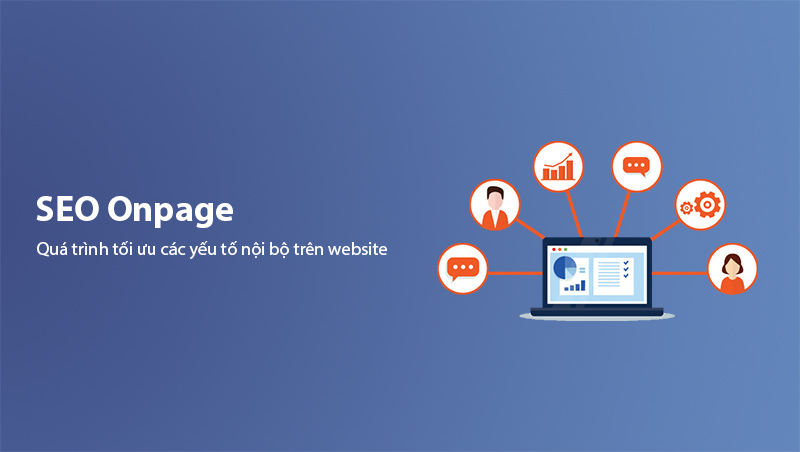
Difference Between Onpage SEO and Offpage SEO
- Onpage SEO: Focuses on elements that can be directly adjusted on the website, such as URL, Title Tags, headings (H1, H2), content, meta description, images, and internal links.
- Offpage SEO: Focuses on building external elements such as backlinks, E-A-T metrics (Expertise, Authoritativeness, Trustworthiness), and popularity on social media platforms.
| Criteria | Onpage SEO | Offpage SEO |
|---|---|---|
| Optimization Elements | Content, keywords, images | External links pointing to the website |
| Control | Completely controllable | Dependent on external factors |
| Objective | Increase search engine friendliness | Increase authority and traffic |
Applying both Onpage and Offpage SEO correctly helps your website achieve a balance between high-quality content and external authority, thereby increasing its chances of appearing on the first page of search results and sustaining organic traffic.
In the next section, we will delve deeper into the most important Onpage SEO optimization standards recommended by Google.
What Are the Most Important Onpage SEO Elements?
Below is a list of the most crucial elements you need to focus on when optimizing Onpage SEO:
- SEO-Friendly URL: Ensure URLs are short, contain the primary keyword, and are user-friendly.
- Title Tag: The title should contain the main keyword, be engaging, and have an ideal length of 50-60 characters.
- Heading 1 (H1): This is the main heading of the article, should contain the main keyword, and appear only once.
- Headings 2 and 3 (H2, H3): Used to break the content into clear sections, making the article easier to read and understand.
- Keyword Density: Ensure that the primary keyword makes up 1-2% of the total word count of the article.
- High-Quality Content That Meets Search Intent: Content should be unique, in-depth, and aligned with the user's search intent.
- Meta Description: A short but informative summary to attract readers to click on the article.
- Image Optimization: Use high-quality images with the correct dimensions and include alt tags with relevant keywords.
- Semantic Keywords (LSI Keywords): Related keywords that make the content more diverse and relevant.
- Bold Main Keywords: Highlight the main keywords in bold at important positions, such as the introduction or mid-section.
- Table of Contents (TOC): Add a table of contents to help users easily navigate long articles.
- Featured Snippets: Optimize short information snippets to increase the chances of appearing in prominent positions on search results.
- Internal and Outbound Links: Internal links help retain users on the site longer, while outbound links add credibility.
- Blockquotes: Use blockquotes to highlight important information or cite reliable sources.
- Advanced Title Tag Optimization: Optimize supporting subheadings to complement the main title and increase relevance.
In the following sections, we will break down each of these standards to ensure you can apply them comprehensively and effectively.
15+ Onpage SEO Standards Recommended by Google
To ensure your website meets SEO standards and easily ranks high on search results, you should pay attention to the Onpage SEO recommendations from Google. Below is a detailed list with explanations for each element.
SEO-Friendly URL
The URL (Uniform Resource Locator) is the address of a webpage and plays a crucial role in describing the content of the page. An SEO-friendly URL must meet the following criteria:
SEO-Friendly URL Criteria:
- Short and easy to understand: Should not exceed 100 characters and avoid unnecessary words.
- Contain the main keyword: Helps search engines and users easily identify the topic.
- Use hyphens (
-) to separate words: This makes the URL easier to read. - Avoid special characters or dynamic parameters (
?id=1234): These make URLs difficult to understand and less user-friendly.
Example:
✅ www.example.com/onpage-seo-guide
❌ www.example.com/index.php?id=4567
Note: If you need to change an old URL, use 301 redirects to retain the ranking from external links pointing to the old URL.
Title Tag
The title tag is the most prominent text displayed on the search results page and directly affects the click-through rate (CTR).
Title Tag Optimization Criteria:
- Include the primary keyword at the beginning of the title: This emphasizes the relevance of the article to the search query.
- Length of 50-60 characters: Ensures the title is fully displayed without being cut off.
- Engaging and action-oriented: Use phrases like "Guide," "Detailed," "Latest."
Example:
✅ "What is Onpage SEO? 23+ Detailed Onpage Optimization Checklist [2025]"
❌ "Home Page - Comprehensive and Best Onpage SEO Guide"
Use tools like Yoast SEO or Rank Math to check if the title tag is unique and not duplicated with other pages.
Heading 1 (H1)
The H1 tag is the main heading of the page or article, helping search engines and users identify the primary topic of the page.
H1 Optimization Criteria:
- Only one H1 tag per page or article.
- Include the main keyword naturally: The primary keyword should appear in the H1.
- Accurately describe the content of the article: The H1 should provide an overview of the entire content.
Example:
✅ "What is Onpage SEO? A Comprehensive Guide from A to Z [2025]"
❌ "Onpage SEO Introduction – Basic Overview"
You can combine the H1 with the meta description to increase the coherence and consistency of the content.
Headings 2 and 3 (H2, H3)
H2 and H3 tags are used to break down the content into major and minor sections, making the article more scannable.
Heading Optimization Criteria:
- Use H2 for main sections: H2 tags should break the article into distinct sections.
- Use H3 for sub-points within H2: This helps structure the article more clearly.
- Include related keywords (LSI keywords): This increases content relevance and avoids overusing the primary keyword.
Keyword Density
Keyword density is the ratio of the number of times the primary keyword appears relative to the total word count of the article.
Keyword Density Optimization Criteria:
- Ideal keyword density: 1-2% of the total word count.
- Avoid keyword stuffing: Excessive keyword repetition can cause Google to flag the article as spam.
- Distribute keywords naturally: The primary keyword should appear in places like the title, introduction, subheadings, and meta description.
Example:
- For a 1,000-word article: The primary keyword should appear 10-20 times.
Unique, In-Depth Content That Meets Search Intent
Content is the core of Onpage SEO. The article must ensure:
- Unique: No plagiarism from other websites.
- In-depth: Provide detailed and valuable information that addresses the user's search query.
- Meets Search Intent: The content should align with the user's purpose, such as:
- Informational: Answering questions or providing guides.
- Transactional: Comparing products or providing reviews.
Optimize Meta Description
The meta description helps users understand the main content of the article on the search results page.
SEO-friendly Meta Description Criteria:
- Length of 150-160 characters: Ensure that it is not truncated on the SERP.
- Contains the main keyword: Increases the likelihood that Google will recognize relevant content.
- Includes a CTA (Call to Action): Encourages users to click, such as "Read more details", "Discover now".
Image Optimization
How to Optimize Images for SEO:
- Name the file with keywords: Avoid default names like IMG123.jpg.
- Alt Tags: Add a short description containing the keyword to support image SEO.
- Image size: Compress images to ensure faster loading speeds.
Recommended Tools:
- TinyPNG: Reduces image size without compromising quality.
- Imagify: Integrates directly into WordPress for automatic image compression.
Optimize Semantic Keywords (LSI Keywords)
Semantic keywords (LSI keywords) make the content more comprehensive and prevent keyword repetition.
For example, if the main keyword is "Onpage SEO", some LSI keywords can be:
- "website optimization", "SEO tools", "content optimization guide".
Bold Main Keywords in the Article
Bold main keywords in the article help Google easily identify important phrases and help readers focus on key points. However, they must be used appropriately to avoid being flagged as keyword stuffing.
Main Keyword Bolding Criteria:
- Use 2-3 times throughout the entire article: Focus on important sections like the introduction, middle, and conclusion.
- Do not bold entire sentences: Only highlight words or keyword phrases within the sentence.
- Combine with related keywords (LSI keywords): In addition to the main keyword, consider bolding related phrases to diversify the text.
Example:
- "What is Onpage SEO? This is a detailed guide to help you optimize Onpage SEO from basic to advanced."
Note: Bolding should feel natural and should not disrupt the flow of the content.
Table of Content (TOC)
The table of contents helps readers easily navigate to important sections of the article, especially for long-form content. Additionally, it helps search engines index and understand the structure of the article more easily.
Benefits of a Table of Content:
- Improves user experience (UX): Allows readers to quickly find the information they need.
- Increases the chance of appearing in Featured Snippets: The table of contents can help your article display as a list in search results.
- Reduces bounce rate: Users are more likely to stay longer if they can quickly navigate to the sections they are interested in.
How to Create an SEO-Friendly Table of Contents:
- Use plugins like Easy Table of Contents if you use WordPress.
- Ensure that the table of contents links correspond correctly to the headings (H1, H2, H3) in the article.
Featured Snippets
Featured Snippets are summary text snippets displayed at position 0 on the search results page, helping your article attract more clicks.
Common Types of Featured Snippets:
- Paragraph Snippet: Provides a direct answer to the user’s query in a short paragraph.
- List Snippet: Displays information as ordered or unordered lists.
- Table Snippet: Displays data in a table format.
How to Optimize for Featured Snippets:
- Write a short introduction of 40-50 words that directly answers the query within the article content.
- Use questions and answers in the introductory section or headings.
- Optimize list sections using
<ul>and<ol>tags.
Internal Links and Outbound Links
Internal links guide users to related articles within the same website, helping to keep them on the page longer and assisting search engines in understanding your website's structure. Outbound links direct users to reputable external websites, enhancing the credibility of your content.
Internal Link Building Criteria:
- Use the main keyword in the anchor text: The link text should contain the keyword or related phrases.
- Link to related articles: This adds informational value for readers and improves the internal link structure.
- Avoid excessive links: Add 2-5 internal links per article, depending on its length.
Outbound Link Building Criteria:
- Link to reputable websites: For example, Wikipedia or authoritative industry sites.
- Use the
nofollowattribute if necessary: Apply it to sponsored or less credible links to preserve SEO value.
Blockquote (Quotes)
Using blockquotes highlights important information or cites valuable sources. This is one way to enhance the credibility and reading experience of your article.
How to Use Blockquotes for SEO:
- Quote reputable sources: Only cite authoritative sources such as official reports or experts.
- Avoid overusing blockquotes: Only use them for essential quotes or to emphasize key points in the article.
- Add internal or external links within quotes: This allows users to reference detailed information when needed.
Optimize Secondary Title Tags (H2, H3, H4)
Secondary title tags like H2, H3, H4 not only help divide the article but also provide search engines with detailed information about the article's structure.
Secondary Title Tag Optimization Criteria:
- H2 for main sections: H2 tags should contain the main or related keywords.
- H3 and H4 for subsections: Use these for more specific details.
- Maintain a logical structure: Ensure that the headings flow coherently without skipping levels (e.g., H2 -> H3 -> H4).
8+ Advanced Onpage SEO Standards
In addition to the basic Onpage SEO standards, implementing advanced techniques will help your website outperform competitors and improve its authority and expertise on search engines. Below are 8+ advanced factors to optimize:
Featured Snippets
This is the "prime" position displayed above regular search results. Featured Snippets provide a quick summary of answers to user queries.
How to Optimize for Featured Snippets:
- Provide a direct and concise answer to the query in the introduction (40-50 words).
- Use H2 or H3 headings for questions to make it easier for Google to index.
- Optimize lists, tables, or short paragraphs for increased chances of appearing.
Internal and Outbound Links
Using internal and outbound links improves authority and reduces the bounce rate (Bounce Rate).
Internal Links:
- Link to related articles within the same topic cluster to keep users engaged longer.
- Use anchor text containing relevant keywords to strengthen semantic linking within the website.
Outbound Links:
- Link to reputable websites such as Wikipedia or expert industry pages to increase content credibility.
- Use the nofollow attribute for sponsored links or less authoritative sources.
Blockquote (Quotes)
Quotes help increase the credibility of the article and highlight important information or expert opinions.
Effective Use of Blockquotes:
- Only use for key quotes or excerpts from reputable sources.
- Avoid overusing blockquotes to maintain focus.
Content GAP (Missing Content)
Content GAP refers to identifying and filling in content that competitors cover but your website has not addressed. This ensures more comprehensive content.
How to Identify Content GAP:
- Use tools like Ahrefs, SEMrush to compare keywords and find missing topics.
- Add popular questions or FAQ sections that users frequently search for.
Schema Markup
Schema Markup is structured data that helps search engines better understand the content of your page. It also helps display additional information such as ratings, publish date, recipes, etc.
Popular Schema Types:
- Article Schema: For blog posts.
- FAQ Schema: For articles with questions and answers.
- Product Schema: For product pages to display prices, ratings, and availability.
Tip: Use Google Structured Data Testing Tool to check for errors in structured data and fix them promptly.
E-A-T (Expertise, Authoritativeness, Trustworthiness)
Google uses E-A-T to evaluate the expertise, authority, and trustworthiness of the content.
How to Optimize for E-A-T:
- Expertise: The author should demonstrate expertise in the field through detailed and accurate information.
- Authoritativeness: Cite credible sources or link to in-depth articles.
- Trustworthiness: Use HTTPS for the website, provide clear contact information, and protect user privacy.
Core Web Vitals
Core Web Vitals measure page loading speed and user interaction.
Key Metrics to Monitor:
- LCP (Largest Contentful Paint): The time it takes for the largest visible content to load (should be under 2.5 seconds).
- FID (First Input Delay): The time taken for the page to respond to user interaction (should be under 100ms).
- CLS (Cumulative Layout Shift): The stability of the page layout (avoid unexpected layout shifts).
Tools to Use: Use Google PageSpeed Insights or Lighthouse to measure and improve Core Web Vitals.
Onpage SEO Performance Checking Tools
To ensure that your articles and entire website meet Onpage SEO standards, using support tools is essential. These tools help detect technical errors, measure content quality, and provide detailed optimization recommendations.
Here is a list of popular Onpage SEO checking tools:
-
Google Search Console:
-
Monitor and track website performance in search results.
-
Report crawl errors, 404 pages, or indexing issues.
-
Provide a list of keywords for which your website is ranking.
Tip: Use the Coverage section in Search Console to detect indexing issues and ensure all pages are properly indexed.
-
-
Google PageSpeed Insights:
- Analyze and measure page load speed on both mobile and desktop.
- Provide optimization suggestions, such as image compression, resource minification, and Core Web Vitals improvement.
-
Yoast SEO or Rank Math (WordPress Plugin):
- Provides detailed guidance on Onpage SEO elements such as title tags, keyword density, internal links, etc.
- Checks the readability of the article to ensure the content is user-friendly.
-
Ahrefs or SEMrush:
- Analyze keywords and assess competitor performance.
- Detect Content GAP and suggest related keywords to supplement the content.
-
Screaming Frog SEO Spider:
- Analyze the entire website structure, check for broken links, and identify pages missing title tags, meta descriptions, or alt text for images.
- Evaluate the depth of internal links (internal linking depth) and check HTTP status codes.
-
Lighthouse (Google DevTools):
- Provides detailed reports on Accessibility, Performance, and SEO directly within the Chrome browser.
- Useful for measuring user experience and page load performance.
Using Onpage SEO checking tools ensures that no elements are missed during optimization. However, keep in mind that tools only serve as support. The key is understanding how to apply the recommendations to your articles and website to achieve optimal performance.
In the next section, we will explore the best times to perform Onpage SEO optimization to maximize the effectiveness of your SEO strategy.
When Should You Perform Onpage SEO Optimization for Your Website?
Choosing the right time to optimize Onpage SEO will help you achieve better results and avoid wasting resources. Below are the key moments when you should perform Onpage SEO optimization:
When Publishing New Articles
- When posting a new article, optimizing Onpage SEO from the start will increase its chances of being indexed quickly and appearing early in search results.
- Ensure that all elements such as URL, title tags, headings, meta descriptions, and images meet SEO standards before publishing.
When Content Becomes Outdated or Needs Updates
- If the content is outdated or no longer meets the search intent of users, update it with the latest information.
- Add sections such as FAQs, statistics, or internal links to related articles to enhance the value of the article.
Example: An article titled “SEO Checklist 2023” should be updated to “SEO Checklist 2025” with the latest standards and tools.
When Your Website Experiences Ranking or Traffic Drops
- If you notice a sudden drop in keyword rankings or a significant decrease in traffic, it's a sign that your website needs re-optimization.
- Use tools such as Google Search Console or Ahrefs to diagnose the issue (indexing errors, page load speed issues, broken links, etc.).
After Offpage SEO Efforts or Link-Building Campaigns
- After implementing link-building campaigns, ensure that the key pages on your website are fully optimized Onpage to maximize the link power.
- Add internal links to guide users to other pages within the website and increase "depth" of engagement.
Before Large Marketing Campaigns
- Before launching advertising campaigns or major promotional events, make sure your landing pages are thoroughly optimized Onpage to improve conversion rates (CRO).
- Optimize elements such as meta titles, meta descriptions, and call-to-action buttons to attract clicks.
When Google Updates Its Algorithm
- Each time Google updates its search algorithm, Onpage SEO factors may be affected. Reviewing and updating articles helps your website adapt to the latest algorithm changes.
- Pay special attention to elements such as E-A-T (Expertise, Authoritativeness, Trustworthiness), Core Web Vitals, and Schema Markup to prevent ranking drops.
Choosing the right time to optimize Onpage SEO helps you seize opportunities to improve rankings and increase traffic quickly. Make sure your website is regularly optimized, especially during important phases such as content updates or when Google releases new algorithms.
Essential Skills for Effective Onpage SEO Optimization
To successfully optimize Onpage SEO, in addition to understanding the standards, you need to acquire specialized skills to ensure an efficient implementation process. Below are some important skills to develop:
Keyword Research Skills
Keyword analysis and selection are the foundation of any SEO activity.
- Understand Search Intent: Identify the user’s intent behind the keyword (information search, purchase, navigation, etc.).
- Select primary and secondary keywords: In addition to the main keywords, adding LSI keywords enhances content richness.
- Use tools such as Google Keyword Planner, Ahrefs, or SEMrush to analyze keyword volume and competition.
Content Writing Skills for SEO
High-quality content must not only meet search engine requirements but also attract and retain readers.
- Optimize structure: Use Heading tags (H1, H2, H3) to divide the article into clear, readable sections.
- Concise and focused writing: Avoid overly long paragraphs and use bullet points when necessary.
- Naturally insert keywords: Place keywords in important positions such as the title, introduction, and headings while ensuring they fit naturally.
Technical SEO Skills
A well-written article can still rank poorly if the website’s technical aspects are not optimized.
- Optimize page load speed: Compress images, use CDNs, and minimize unnecessary code.
- Use proper meta tags: Optimize meta descriptions, titles, and alt tags for images.
- Structured data (Schema Markup): Add structured data to help search engines better understand your content.
Data Analysis Skills
Being able to read and analyze reports from SEO tools will help you make precise optimization decisions.
- Google Analytics: Monitor user behavior, time on page, bounce rate, and conversion rate.
- Google Search Console: Check indexing errors, keyword rankings, and non-SEO-friendly pages.
- Ahrefs/SEMrush: Analyze backlinks, keywords, and Content GAPs to improve your articles.
Internal Linking Management Skills
A good internal linking system strengthens connections between articles and distributes SEO power across the entire website.
- Build links between related articles within the same topic cluster.
- Use appropriate anchor text that contains relevant keywords to guide readers effectively.
Equipping yourself with comprehensive keyword analysis, SEO content writing, and internal linking management skills will help you optimize Onpage SEO more effectively. This process not only improves search rankings but also enhances user experience, keeps visitors on your site longer, and increases conversion rates.
Frequently Asked Questions About Onpage SEO Optimization
During Onpage SEO optimization, there are many common questions that SEO professionals and website owners often ask. Below are detailed answers to some frequently asked questions to help you better understand and apply Onpage SEO effectively.
Why Is Onpage SEO Optimization Important?
Onpage SEO helps search engines understand the structure and content of your website, determining its relevance to user queries. Additionally, Onpage SEO helps:
- Improve user experience with clear layouts and faster page load times.
- Increase the chance of appearing in prominent positions like Featured Snippets.
- Support overall SEO strategy by working closely with Offpage SEO and Technical SEO.
How Long Does It Take for Onpage SEO to Show Results?
The time it takes to see results from Onpage SEO optimization can vary depending on several factors:
- New website: It may take 3-6 months for articles to be indexed and achieve stable ranking improvements.
- Established website: If a strong SEO foundation already exists, improvements may be noticeable within a few weeks after updates.
Should All Website Pages Be Optimized for Onpage SEO?
Not all pages need to be optimized, but you should focus on key types of pages:
- Product/service pages: Ensure clear information, optimized images, and compelling CTAs.
- Blog pages: Optimize articles with high-quality content, clear headings, and appropriate internal links.
- Landing pages: Focus on fast loading speed, meta descriptions, and subheadings to increase conversions.
How Many Internal Links Should Be Used in an Article?
The number of internal links depends on the length of the article and content relevance:
- For articles between 1,000-1,500 words: 3-5 internal links are appropriate.
- Avoid overloading paragraphs with too many links, as this can be disruptive for readers.
Does Meta Description Affect SEO Directly, and Should It Be Optimized?
Although the Meta Description does not directly impact rankings, it enhances the click-through rate (CTR), which can indirectly improve search rankings. A compelling meta description containing the main keyword increases user engagement in search results.
Should the H1 Heading Match the Title Tag?
- Answer: It can match or differ slightly, but they should be closely related for consistency.
- The H1 is typically the main title of the article, while the Title Tag is displayed on the search results page. Both should contain the primary keyword and accurately describe the article's topic.
Is Keyword Stuffing Effective for Higher Rankings?
No. Keyword stuffing can cause your article to be flagged
as spam by Google, resulting in ranking penalties. Instead of overusing the main keyword, use related keywords (LSI keywords) to add variety and maintain a natural flow.
Understanding and applying Onpage SEO principles correctly will help you avoid common mistakes and enhance your content's performance. The answers above aim to clarify common questions and provide a comprehensive perspective on Onpage SEO.
Conclusion
Optimizing Onpage SEO involves not only adjusting technical factors like URL, title tags, headings, and meta descriptions but also enhancing content quality and improving the user experience. This is one of the key pillars determining the success of your overall SEO strategy.
Good luck on your SEO journey! If you need more detailed guidance on any part of the article, don’t hesitate to ask for additional information or recommended support tools!
Latest Posts

Lesson 26. How to Use break, continue, and return in Java | Learn Java Basics
A guide on how to use break, continue, and return statements in Java to control loops and program execution flow effectively.

Lesson 25. The do-while Loop in Java | Learn Basic Java
A detailed guide on the do-while loop in Java, including syntax, usage, examples, and comparison with the while loop.

Lesson 24. How to Convert Decimal to Binary in Java | Learn Basic Java
A guide on how to convert numbers from the decimal system to the binary system in Java using different methods, with illustrative examples.

Lesson 23. How to Use the While Loop in Java | Learn Java Basics
Learn how to use the while loop in Java with syntax, real-world examples, and practical applications in Java programming.
Related Posts
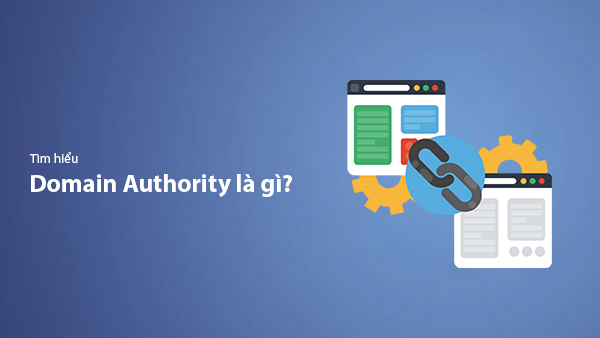
What is Domain Authority? 13-Step Guide to Improve DA Score for Your Website in 2025
Discover what Domain Authority is and its importance in SEO. A detailed guide on the 13-step process to effectively increase DA, from content research and technical optimization to building quality backlinks for a sustainable SEO strategy.
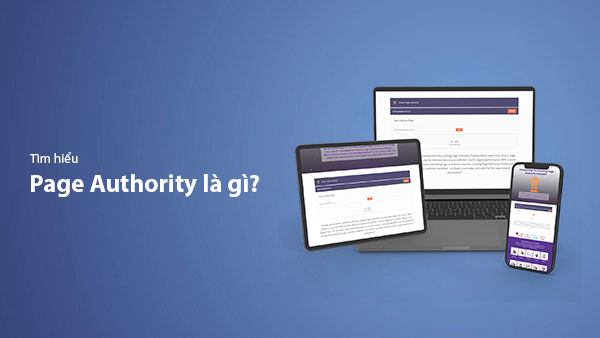
What is Page Authority? The Importance of Page Authority for SEO in 2025
Learn what Page Authority (PA) is and its role in SEO optimization to help improve your website's ranking on search engines in 2025.
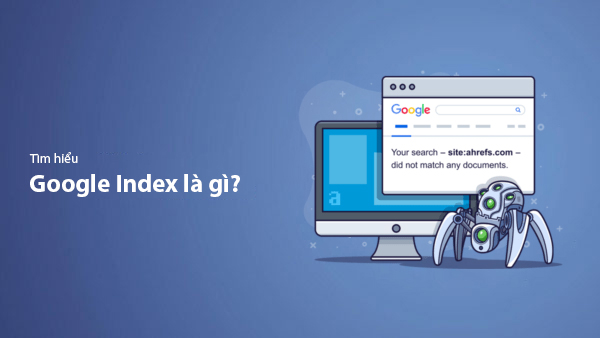
What is Google Index? A Guide to 13 Ways to Speed Up Website Indexing in 2025
Discover what Google Index is and learn detailed guidelines on 13 effective ways to get your website indexed quickly and boost your SEO rankings on Google in 2025.
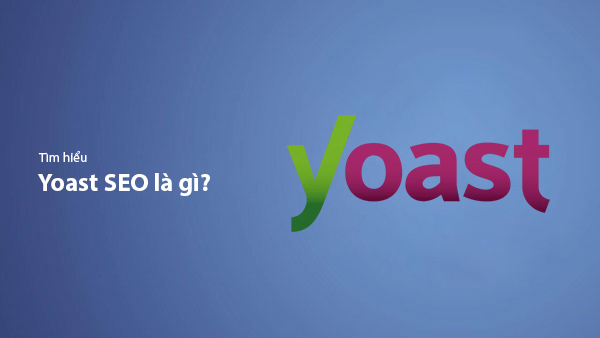
What is Yoast SEO? A Comprehensive Guide to Using Yoast SEO Plugin from A-Z
Learn what the Yoast SEO Plugin is and how to use it to fully optimize SEO for your WordPress website from A-Z.

